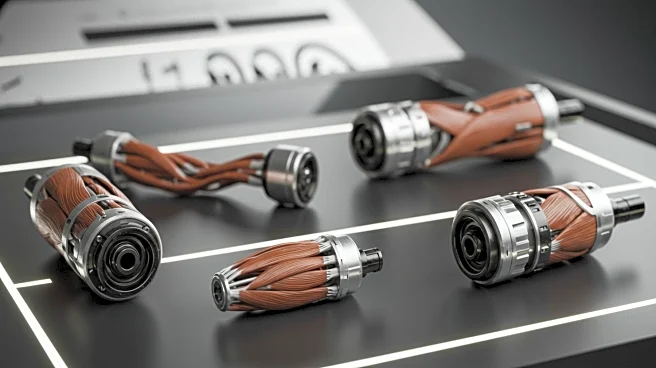What's Happening?
A team of researchers has created a muscle-inspired elasto-electromagnetic system to power insect-sized soft robots. These actuators are made from flexible materials, including a silicone polymer, neodymium magnet, and electrical coil, allowing the robots to perform autonomous movements such as crawling, swimming, and jumping. The actuators generate a Lorentz force, enabling the robots to move efficiently with low operational voltage and high output force, making them suitable for search-and-rescue operations and infrastructure inspections.
Why It's Important?
The development of these actuators marks a significant advancement in robotics, particularly for applications requiring small, autonomous robots. The ability to navigate complex environments and perform tasks autonomously could revolutionize fields such as disaster response and infrastructure maintenance. The energy-efficient design of these actuators also highlights the potential for sustainable robotic solutions, reducing the need for continuous power supply.
What's Next?
The research team plans to develop sensor-rich robotic swarms capable of distributed detection and decision-making. These swarms could cover wide areas and adapt to dynamic environments, enhancing their utility in complex tasks. Additionally, the team is exploring flying and swimming movements, including jellyfish-like robots for deep-sea exploration, expanding the potential applications of these soft robots.











